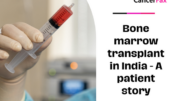Eating grapes may prevent you from cancer
Some research shows eating grapes may prevent cancer. Lung malignancy is the deadliest type of tumor on the planet, and 80% of deaths are associated with smoking. Notwithstanding tobacco control, compelling chemoprevention techniques are in this way required. A group of researchers from the University of Geneva (UNIGE), Switzerland, examined an outstanding regular item, resveratrol, which is found in grapes and in red wine. While its chemopreventive properties against growths influencing the stomach related tract have been archived by past examinations, resveratrol has so far demonstrated no impact on lung malignancies. On account of nasal organization, the UNIGE group got exceptionally encouraging outcomes in an investigation directed in mice and depicted in the diary Scientific Reports.
In any case, resveratrol does not appear to be reasonable for forestalling lung malignancy: when ingested, it is used and killed within minutes, and in this manner, it does not have sufficient energy to reach out to the lungs. “This is the reason our test was to discover a manner in which resveratrol could be solubilized in extensive amounts, despite the fact that it is inadequately dissolvable in water, with a specific end goal to permit nasal organization. This plan, relevant to people, enables the compound to achieve the lungs,” clarifies Aymeric Monteillier, a researcher in the School of Pharmaceutical Sciences of the UNIGE Faculty of Science, and the principal creator of the examination. The resveratrol fixation acquired in the lungs after the nasal organization of the definition was 22 times higher than when taken orally. The chemoprevention instrument is most likely identified with apoptosis, a procedure by which cells program their own demise and from which tumor cells escape. The UNIGE investigation group will now center around finding a biomarker that could add to the determination of individuals qualified for preventive treatment with resveratrol.
Resveratrol is a well-known molecule that is found in nourishment supplements, implying that no further toxicological examination would be required before commercialization as a preventive treatment. “This revelation is shockingly minimal financial enthusiasm for pharmaceutical gatherings. The particle is undoubtedly basic and non-patentable, and tumor avoidance thinks about requiring a follow-up over numerous years,” laments Muriel Cuendet, without barring the advancement of preventive treatment in people.
For details on cancer treatment and a second opinion, call us at +91 96 1588 1588 or write to cancerfax@gmail.com.
- Comments Closed
- October 4th, 2018



CancerFax is the most trusted online platform dedicated to connecting individuals facing advanced-stage cancer with groundbreaking cell therapies.
Send your medical reports and get a free analysis.
🌟 Join us in the fight against cancer! 🌟
Привет,
CancerFax — это самая надежная онлайн-платформа, призванная предоставить людям, столкнувшимся с раком на поздних стадиях, доступ к революционным клеточным методам лечения.
Отправьте свои медицинские заключения и получите бесплатный анализ.
🌟 Присоединяйтесь к нам в борьбе с раком! 🌟